Coyote – Native American Trickster, Creator, And Sacred Animal Who Can Deceive But Also Give Wisdom
A. Sutherland - AncientPages.com - Coyote, the trickster-god, is a well-known figure in myths and legends of Indigenous peoples of North America.
Coyote, a mischievous, cunning, and destructive force at work within creation, was also assigned to the role of god-deceiver, a great cheater who misleads people and animals and finds obvious pleasure in causing troubles and upsets daily.
Credit: Adobe Stock - Yevhenii
Coyote Can Deceive And Be Reckless
Among the many tribes of Native Americans, there is a belief that the Coyote is the bearer of all evil and brings winter and even death. The Maidu people of northern California, for example, portrayed the Coyote as deceitful, greedy, and reckless, and these evident failings in his character make problems for people around him. His impulsive and foolish behavior causes him to suffer, too. Frequently, he is killed through his carelessness, but, in some way, amazingly, he always comes back to life afterward.
Still, the Coyote remains a very prominent animal. The basis of his character is the same in all myths; only a few character traits of Coyote vary from region to region.
Coyote Can Share Priceless Wisdom With People
Other tribes claim the opposite and believe Coyote is the teacher of wisdom, the trickling god, who - when properly approached - can share with people some priceless wisdom.
Many Native myths deal with this amazing creature, the most sacred and, at the time, most profane of animals. Coyote's power is to make people free or to feel fear.
Coyote is a sacred animal among Native Americans. Credit: Adobe Stock - Mircea Costina
Among many Native American tribes, the Coyote is credited with bringing humanity the gift of fire, the destruction of monsters, the making of waterfalls, and the teaching of useful arts to the Indians. But perhaps the most famous and fascinating incarnation of this remarkable creature is presented in the Nez Perce tribe's myth of Coyote and the Shadow People. His actions lead to humankind being forever separated from the spirit realm of the dead.
Coyote Shows Us How Ridiculous We Can Be Sometimes
As we look deeper into Coyote's character, we realize that the creature's cunning tricks are not always trivial. His mischief is not so much to deceive us from our goal as to show how ridiculous we often are in our lives and suggest we have to take a bit of distance from ourselves and think about what we really do with our lives.
Unlike the Coyote, we cannot come back to life if we are killed. Looking at Coyote's foolishness, we can avoid making mistakes and find a straight road with a purpose.
Coyote is sometimes a Creator and sometimes a clown, destroying things for himself and others who surround him.
Because of his vanity and boastfulness, the Coyote undertakes various ambitious enterprises, in which he fails due to his passions.
Is it not the same we experience our lives sometimes?
Coyote And Other Tricksters In Mythology
Coyote has been compared to both the Scandinavian Loki, and also Prometheus, who shared with Coyote the trick of having stolen fire from the gods as a gift for mankind, and Anansi, the great trickster of West African legend, who was originally credited with the creation of the world and became a cultural founder hero.
In the Aztec pantheon of gods, the trickster and transformer, Ueuecoyotl or Huehuecóyotl ("Old Coyote"), shares many characteristics with the trickster Coyote of the North American tribes.
In Eurasia, rather than a coyote, a fox is often featured as a trickster hero. For example, in Japanese mythology, he is known as kitsune, and in medieval European folklore, there is a similar figure known as Reynard the Fox.
Updated on January 7, 2024
Written by – A. Sutherland AncientPages.com Staff Writer
Copyright © AncientPages.com All rights reserved. This material may not be published, broadcast, rewritten or redistributed in whole or part without the express written permission of AncientPages.com
Expand for referencesReferences:
Alexander, Hartley Burr. The Mythology of All Races
Sun Bear, Wabun Wind, Crysalis Mulligan, Dancing with the Wheel
D. Moses, Pursued by a Bear: Talks, Monologues and Tales
More From Ancient Pages
-
 Early City Planning In The Kingdom Of Judah Examined
Archaeology | Jul 5, 2023
Early City Planning In The Kingdom Of Judah Examined
Archaeology | Jul 5, 2023 -
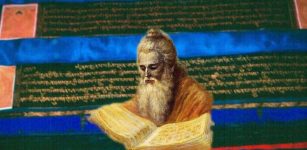 2,500-Year-Old Tibetan Medical Text Describes A Coronavirus-Like Outbreak In Surprisingly Accurate Details
News | Oct 26, 2020
2,500-Year-Old Tibetan Medical Text Describes A Coronavirus-Like Outbreak In Surprisingly Accurate Details
News | Oct 26, 2020 -
 Why Winter Solstice Matters Around The World
Archaeoastronomy | Dec 20, 2022
Why Winter Solstice Matters Around The World
Archaeoastronomy | Dec 20, 2022 -
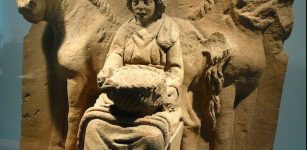 Epona – One Of The Oldest And Widely Known Celtic Deities
Celtic Mythology | Feb 26, 2018
Epona – One Of The Oldest And Widely Known Celtic Deities
Celtic Mythology | Feb 26, 2018 -
 Fossil Of Extinct Human Species Reveals Climate Change Led To Unexpected Anatomical Changes 2 Million Years Ago
Archaeology | Nov 11, 2020
Fossil Of Extinct Human Species Reveals Climate Change Led To Unexpected Anatomical Changes 2 Million Years Ago
Archaeology | Nov 11, 2020 -
 The Navajo People In The Land Of The Four Sacred Mountains
Civilizations | Jun 10, 2020
The Navajo People In The Land Of The Four Sacred Mountains
Civilizations | Jun 10, 2020 -
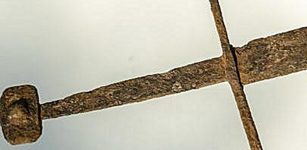 Medieval Well-Preserved Sword Discovered In A Peat Bog In Poland
Archaeology | Jun 21, 2017
Medieval Well-Preserved Sword Discovered In A Peat Bog In Poland
Archaeology | Jun 21, 2017 -
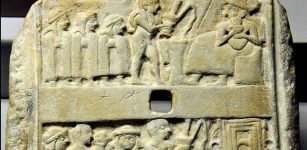 Ur – One Of The Largest And Most Important Cities Of Ancient Mesopotamia
Featured Stories | Jul 28, 2021
Ur – One Of The Largest And Most Important Cities Of Ancient Mesopotamia
Featured Stories | Jul 28, 2021 -
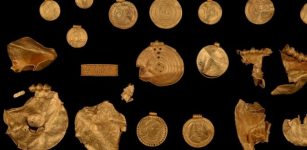 3D Scan Will Uncover Secrets Of The Magnificent Vindelev Gold Treasure
Archaeology | Oct 25, 2023
3D Scan Will Uncover Secrets Of The Magnificent Vindelev Gold Treasure
Archaeology | Oct 25, 2023 -
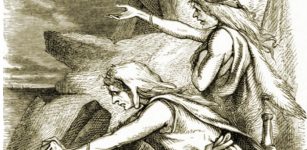 Fenja And Menja: Two Giant Sisters, Magical Grotte Mill And Why The Sea Is Salt
Featured Stories | Feb 15, 2020
Fenja And Menja: Two Giant Sisters, Magical Grotte Mill And Why The Sea Is Salt
Featured Stories | Feb 15, 2020 -
 Scientists Closer To Solving The Mystery Of When Animals Evolved
Evolution | Jul 6, 2023
Scientists Closer To Solving The Mystery Of When Animals Evolved
Evolution | Jul 6, 2023 -
 Greek God Asclepius And Ancient Healing Center ‘Asclepion Of Pergamum’
Civilizations | Nov 29, 2014
Greek God Asclepius And Ancient Healing Center ‘Asclepion Of Pergamum’
Civilizations | Nov 29, 2014 -
 Are The Strange Lawrence Brook Carvings In New Jersey A Cryptic Message?
Featured Stories | Feb 10, 2023
Are The Strange Lawrence Brook Carvings In New Jersey A Cryptic Message?
Featured Stories | Feb 10, 2023 -
 Rare Coins Found In A Dead Sea Cave Offer First Solid Evidence For The Maccabean Revolt 2,200 Years Ago
Archaeology | Jan 2, 2023
Rare Coins Found In A Dead Sea Cave Offer First Solid Evidence For The Maccabean Revolt 2,200 Years Ago
Archaeology | Jan 2, 2023 -
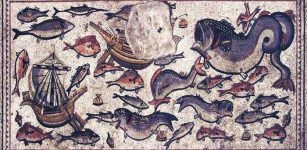 Stunning Ancient Lod Mosaic With Message Of Approaching Danger To The Ship At Sea
Artifacts | Aug 14, 2023
Stunning Ancient Lod Mosaic With Message Of Approaching Danger To The Ship At Sea
Artifacts | Aug 14, 2023 -
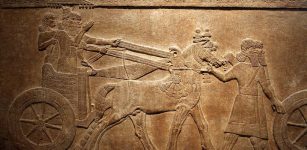 Pax Assyriaca: Important Time For The Neo Assyrian Empire And Surrounding Regions
Ancient History Facts | Aug 11, 2016
Pax Assyriaca: Important Time For The Neo Assyrian Empire And Surrounding Regions
Ancient History Facts | Aug 11, 2016 -
 Strange History Of Safety Coffins: From Ancient To Modern Times
Featured Stories | Feb 9, 2016
Strange History Of Safety Coffins: From Ancient To Modern Times
Featured Stories | Feb 9, 2016 -
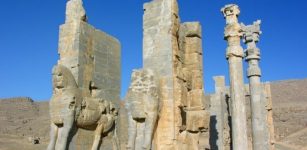 Discovery Of 1500-Year-Old Celestial Observatory Dated To Sassanian Empire
Archaeology | Mar 16, 2017
Discovery Of 1500-Year-Old Celestial Observatory Dated To Sassanian Empire
Archaeology | Mar 16, 2017 -
 Neanderthals Vanishing When Homo Sapiens Emerged In Europe Was Coincidental – Are Herbivores The Answer?
Evolution | Sep 29, 2023
Neanderthals Vanishing When Homo Sapiens Emerged In Europe Was Coincidental – Are Herbivores The Answer?
Evolution | Sep 29, 2023 -
 Amazing Prehistoric Forest Submerged Under Water Thousands Of Years Ago Re-Emerges On Welsh Beach
Archaeology | Nov 11, 2022
Amazing Prehistoric Forest Submerged Under Water Thousands Of Years Ago Re-Emerges On Welsh Beach
Archaeology | Nov 11, 2022


